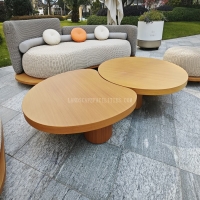Welcome to the website for landscape facilities products and knowledge.
How does the table’s design ensure it remains stable when used for dining or working?
Modern table design incorporates multiple engineering principles to ensure exceptional stability during both dining and working activities. The foundation of table stability begins with the leg construction, where manufacturers employ either substantial solid wood legs or reinforced metal bases with strategic cross-bracing. These support structures are precisely angled and reinforced to distribute weight evenly across the entire surface, preventing any tendency to wobble or shift when pressure is applied to one side.
The table apron, a horizontal frame connecting the legs beneath the tabletop, serves as a critical stability component. This structural element acts as a reinforcement system, preventing leg splaying and maintaining proper alignment over years of use. High-quality tables feature aprons crafted from durable hardwoods or reinforced steel, securely joined to both the tabletop and legs through advanced joinery techniques like mortise-and-tenon or welded connections.
Material selection significantly impacts stability. Engineered wood products with balanced core construction resist warping from humidity changes, while solid wood tables utilize properly seasoned timber to maintain structural integrity. Tabletops undergo precise milling to ensure uniform thickness, eliminating potential weak points that could compromise stability. For larger tables, additional center supports or pedestal bases provide extra reinforcement points, particularly important for extension tables that must maintain stability when fully expanded.
Advanced manufacturing techniques contribute substantially to table stability. Computer-controlled routing ensures perfect component alignment, while specialized hardware like structural brackets and reinforced connectors create seamless integration between parts. The finish application process also plays a role - properly sealed surfaces protect against moisture absorption that could lead to uneven expansion and instability. Through these meticulous design considerations and construction methods, modern tables achieve the necessary rigidity to remain completely stable whether supporting a formal dinner service or bearing the weight of computer equipment during intensive work sessions.
Related search:

Recommendation
Elliptical metal outdoor table with nested design, resembling wood grain, round table